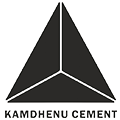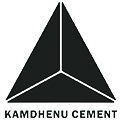Picture constructing a home that is meant to stand strong for a century or more. In a country that fashions 800 crore bricks year after year, the choice of brick becomes more than a choice; it’s a craft. From the carved exteriors of ancient temples to the sleek lines of new skyscrapers, bricks have quietly moulded our horizon. Yet, the construction market brims with varieties, each with different weights and behaviours. So how do you find the one that fits?
This guide breaks down 10 essential brick types, their properties, costs, and ideal uses—paired with Kamdhenu Cement for unshakeable strength.
What is a Brick?
A brick is a small, rectangular block, usually crafted from clay, concrete, or other mixtures. These building blocks form the backbone of walls, pathways, and a thousand other elements. An outstanding brick provides compressive strength, thermal moderation, and durability against moisture and weather—essential for a long-lasting edifice. Before exploring the varieties, grasp the 7 universal yardsticks that define professional-grade bricks:
- Compressive Strength: Must handle 3.5–35 N/mm² pressure (load-bearing walls need 10+ N/mm²).
- Water Absorption: Under 20% weight gain after 24 hours of immersion. Lower water absorption means better monsoon resistance.
- Hardness: No scratches when scraped with metal.
- Size Consistency: IS standard (190×90×90 mm or 190×90×40 mm).
- Efflorescence Resistance: Minimal salt deposits on surfaces.
- Thermal Insulation: Keeps interiors cool in heat.
- Sound Insulation: Critical for urban homes.
10 Key Types and Properties of Bricks in Construction
Understanding the different Types and Properties of Bricks helps you pick the perfect one for your project. Here’s a look at the most common ones used across India:
1. Burnt Clay Bricks: The Classic Choice
- What they are: The most traditional and widely used brick in India, made by molding clay and firing it in a kiln.
- Key Properties: High compressive strength, durable, fire-resistant. Quality varies (First-class: uniform shape/size; Fourth-class: often broken for aggregate).
- Best For: Load-bearing walls in houses, commercial buildings – the backbone of much Indian construction.
2. Sun-Dried (Unburnt) Bricks: The Economical Option
- What they are: Clay bricks dried naturally in the sun, not fired.
- Key Properties: Very low cost, eco-friendly (low energy). But: Low strength, poor durability, easily damaged by water and pests.
- Best For: Temporary shelters, low-cost rural constructions (less common in permanent urban structures).
3. Fly Ash Bricks: The Sustainable Star
- What they are: Made from fly ash (a coal power plant waste), cement, and water. A popular eco-alternative.
- Key Properties: Lightweight yet strong, smooth finish, low water absorption, excellent thermal insulation, and reduces environmental impact.
- Best For: High-rise apartments, factories, infrastructure projects – increasingly favoured for modern Types and Properties of Bricks in India.
4. Concrete Bricks: The Versatile Performer
- What they are: Manufactured using cement, sand, and aggregates. It can be solid or hollow.
- Key Properties: High strength, good sound and heat insulation, highly customizable (colour, texture, size).
- Best For: Facades, garden walls, fences, partition walls, decorative elements.
5. Engineering Bricks: The Heavy-Duty Specialist
- What they are: Designed for exceptional strength and low water absorption. Often dark red or blue.
- Key Properties: Very high compressive strength and density, extremely low porosity, resistant to frost, chemicals, and moisture.
- Best For: Foundations, damp proof courses (DPC), basements, bridges, retaining walls, sewers – where strength and water resistance are paramount.
6. Fire Bricks (Refractory Bricks): The Heat Warriors
- What they are: Made from special clays (like fireclay) to withstand extreme heat.
- Key Properties: Exceptional heat resistance (up to 1600°C!), low thermal conductivity, won’t crack under high temperatures.
- Best For: Fireplaces, chimneys, pizza ovens, industrial furnaces, kilns – anywhere intense heat is present.
7. Hollow Bricks: The Lightweight Insulators
- What they are: Bricks with hollow cavities or cores (like a block).
- Key Properties: Significantly lighter weight, easier to handle, superior thermal and sound insulation, reduce load on foundations.
- Best For: Partition walls, exterior walls in multi-story buildings (flats), facades – improving energy efficiency.
8. Perforated Bricks: The Light & Airy Choice
- What they are: Bricks with small, cylindrical holes drilled all the way through.
- Key Properties: Lightweight, cost-effective (less material), allow some ventilation/light, good aesthetics, low water absorption.
- Best For: Decorative walls, cladding, non-load-bearing partitions, boundary walls, grilles.
9. Calcium Silicate Bricks (Sand-Lime Bricks): The Precise & Smooth
- What they are: Made from sand, lime, and water, cured under steam pressure (not fired).
- Key Properties: Excellent dimensional accuracy, smooth surface, uniform colour (often grey or white), resistant to efflorescence and fire.
- Best For: Load-bearing and decorative walls in multi-story buildings, where a clean finish is desired.
10. Eco Bricks: The Green Innovators
- What they are: A modern solution, often made by compressing recycled plastic waste or other non-traditional materials into brick forms.
- Key Properties: Highly eco-friendly (uses waste), lightweight, durable, resistant to water and chemicals. Properties vary based on the materials used.
- Best For: Sustainable building projects, landscaping walls, small structures, community initiatives – pushing the boundaries of green construction.
Why Your Cement Choice Matters as Much as Your Bricks?
A perfect brick wall can fail with weak cement. Here’s why Kamdhenu Cement completes your project:
Brick-Cement Synergy:
- Forms 2x stronger bond than generic cement, preventing cracks in clay/fly ash bricks.
- Low heat hydration protects temperature-sensitive bricks (like hollow blocks).
2. Tailored for Indian Climates:
- Kamdhenu PPC: Resists monsoon moisture in coastal regions.
- Kamdhenu SRC: Fights sulfate damage in soil-rich areas.
3. Sustainability Edge:
- 30% lower CO₂ emissions during manufacturing vs. industry average.
Real Impact: A Chennai builder reported 40% faster construction using Kamdhenu with fly ash bricks due to instant setting and zero slump.
What to Consider When Choosing the Right Brick?
Picking the best brick involves thinking about:
- The Job: Is it for a load-bearing wall, a partition, a foundation, or decoration?
- Your Budget: Costs vary significantly between types.
- Location & Climate: Consider rain, heat, frost. Engineering bricks excel in damp/wet conditions.
- Sustainability Goals: Fly Ash and Eco Bricks offer environmental benefits.
- The Look: Colour and texture impact the final appearance.
Why Choose Kamdhenu Cement?
Picking the perfect brick matters, but that’s only the beginning. The cement that binds them matters just as much, because only the strongest, toughest mortar can prevent cracks and keep your wall, and your investment, standing decades from now. Kamdhenu Cement is that mortar.
- Unmatched Bonding Strength. Kamdhenu Cement grips firmly, so whether your wall is built with classic clay, modern fly ash, or heavy concrete blocks, every brick fits like a perfect puzzle piece, creating a foolproof, long-lasting envelope.
- Proven Durability. Produced in facilities that never compromise, Kamdhenu Cement defies rain, sun, and frost, defending your brick surface from the wear that undermines weaker mixes year by year.
- Consistent Quality. Each sack that arrives on-site meets stringent BIS standards, so every scoop, batch, and joint maintains the same dependable performance from the first brick to the last.
- All-Brick Compatibility. Tested with every class of brick in India, from sun-dried field units to engineered blocks, Kamdhenu Cement works seamlessly in every region and every application.
- Eco-Conscious Commitment. From raw inputs to packaging, our factories practice sustainable energy and recycling, bringing you a product that respects the earth as much as your investment.
- Pan-India Availability. With depots and dealers covering every corner of the country, sourcing Kamdhenu Cement is one delay you’ll never face, keeping your timeline on track.
Conclusion
Learning the types and properties of bricks available in India lets you choose with the precision of a master builder. From monsoon-proof engineering units to refined fly ash blocks, the right brick unlocks performance; the right cement locks it in. Kamdhenu Cement is that lock.
A home isn’t measured in bricks. It’s measured in patience that strengthens every seam, in love that cushions every corner, and in trust that steadies every floor. — Kamdhenu Cement
Head to the nearest Kamdhenu dealer and start placing the dreams that will fill your home, one steadfast brick at a time!


